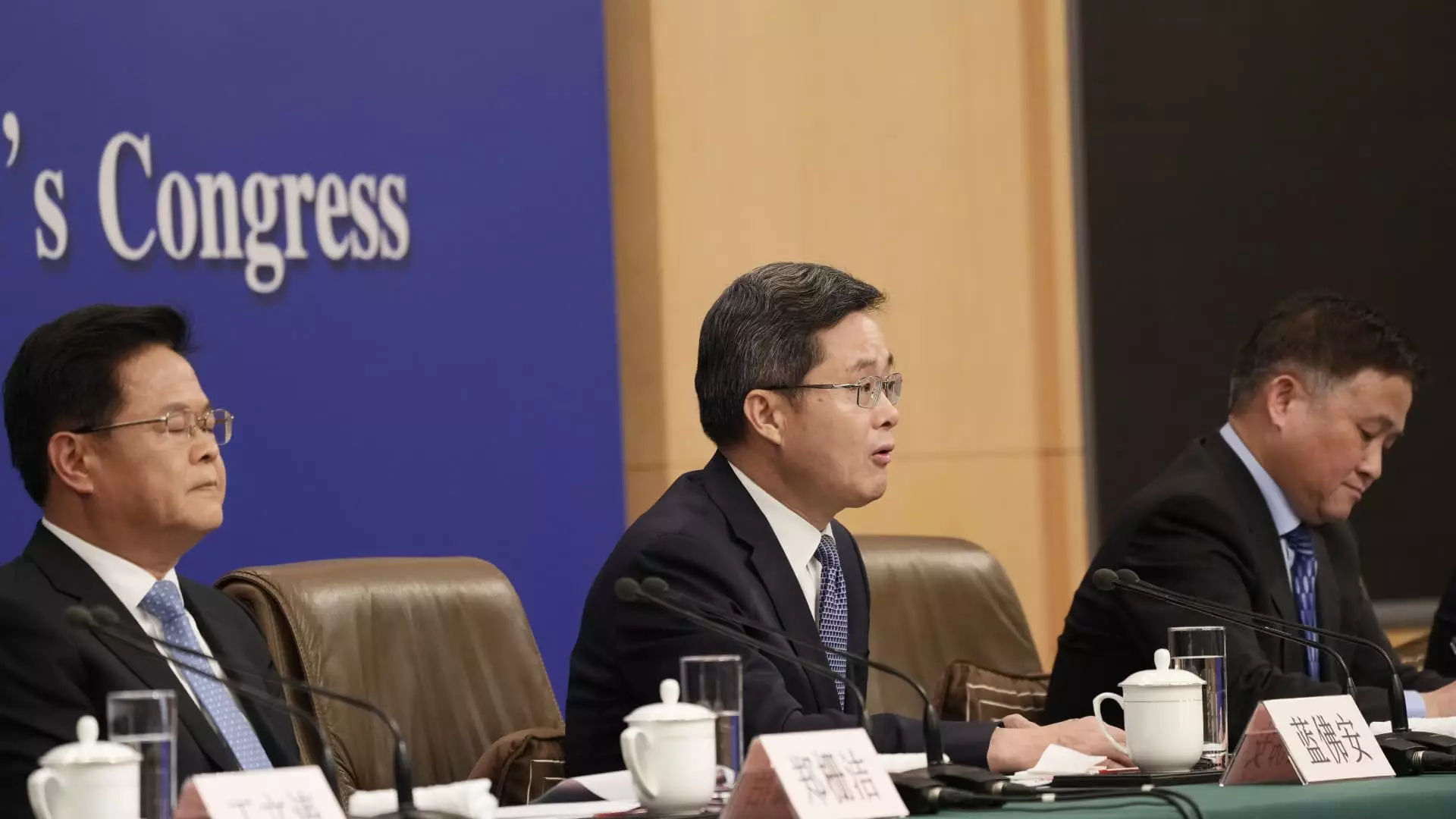As China grapples with mounting economic challenges, Finance Minister Lan Fo’an took center stage during a weekend press briefing, signaling a potential recalibration of the country’s fiscal policies. Lan emphasized that the central government has the capacity to widen the debt and deficit margins, indicating an openness to explore robust financial strategies aimed at reviving local economies. The backdrop of this revelation is a concerning economic landscape characterized by lackluster growth rates, a persistent slump in the real estate market, and rising local government debt risks.
Despite these pressing issues, the immediate response from Beijing remains ambiguous. High-level discussions have taken place recently, notably a meeting convened by President Xi Jinping, where a consensus on bolstering monetary and fiscal policies emerged, yet the specifics remain elusive. This vagueness has led to speculation and anxiety among economists and investors alike, urging for more concrete measures to invigorate the economy.
Economists are united in their perspective that China requires substantial fiscal support. Projections of the necessary fiscal stimulus range dramatically, from an estimated 2 trillion yuan ($283 billion) to as high as 10 trillion yuan, revealing a divergence in opinions regarding the severity of the economic challenges. Ting Lu, chief economist at Nomura, has underscored crucial considerations regarding the approval process for any proposed stimulus measures, which must receive the green light from China’s parliament. This parliamentary dynamic adds a layer of complexity to the speed and efficacy of potential interventions.
Moreover, the focus must not only be on the size of the stimulus but also its strategic allocations. There is a growing concern that resources may be misallocated, primarily aimed at stabilizing beleaguered local government finances, rather than stimulating consumer demand—a critical driver of China’s economy. With retail sales exhibiting only modest growth and little sign of recovery in the real estate sector, the urgency for effective fiscal policy is palpable.
China’s GDP growth, which rose by just 5% in the first half of the year, is fueling concerns that the nation may struggle to meet its annual target of approximately 5%. This apprehension is compounded by the anticipation of the upcoming third-quarter GDP release by the National Bureau of Statistics on October 18. Analysts are bracing for the potential revelation of further economic obstacles and challenges that may validate fears of faltering growth.
Following a weeklong holiday, the mainland Chinese stock market has shown signs of turbulence as a stimulus-induced rally quickly faded. This volatility has led major indices to retrace back to levels akin to those observed in late September. The CSI 300 saw its most robust week since 2008 when promising policy announcements were made, suggesting an intervention to counteract slowing economic momentum. However, the recent decline underscores investor apprehension regarding the efficacy and sincerity of the government’s commitment to comprehensive economic support.
In contrast to the hesitation surrounding fiscal stimulus, monetary easing efforts have begun to take shape. The People’s Bank of China (PBOC) initiated interest rate cuts and extended existing real estate support measures for another two years, reflecting a cautious but proactive stance. Additionally, a substantial $71 billion program was launched to facilitate investments in the stock market by institutional investors, aimed at restoring confidence in financial markets.
The National Development and Reform Commission (NDRC), China’s leading economic planning agency, communicated a commitment to expedite the deployment of 200 billion yuan previously earmarked for investment projects. However, this announcement did not include any new stimulus initiatives, indicating that while there is a recognition of the need to act, the roadmap for substantive policy changes remains vague.
In summation, the Chinese economy stands at a crucial juncture, marked by necessity for decisive fiscal interventions to stave off further deterioration. While recent statements from government officials suggest an acknowledgment of these challenges, the lack of concrete policy outlines has left many stakeholders in a state of uncertainty. The coming weeks will be critical; as policymakers outline their strategies, both domestic and international observers will be watching closely to gauge how effectively China can navigate these turbulent economic waters.


Leave a Reply